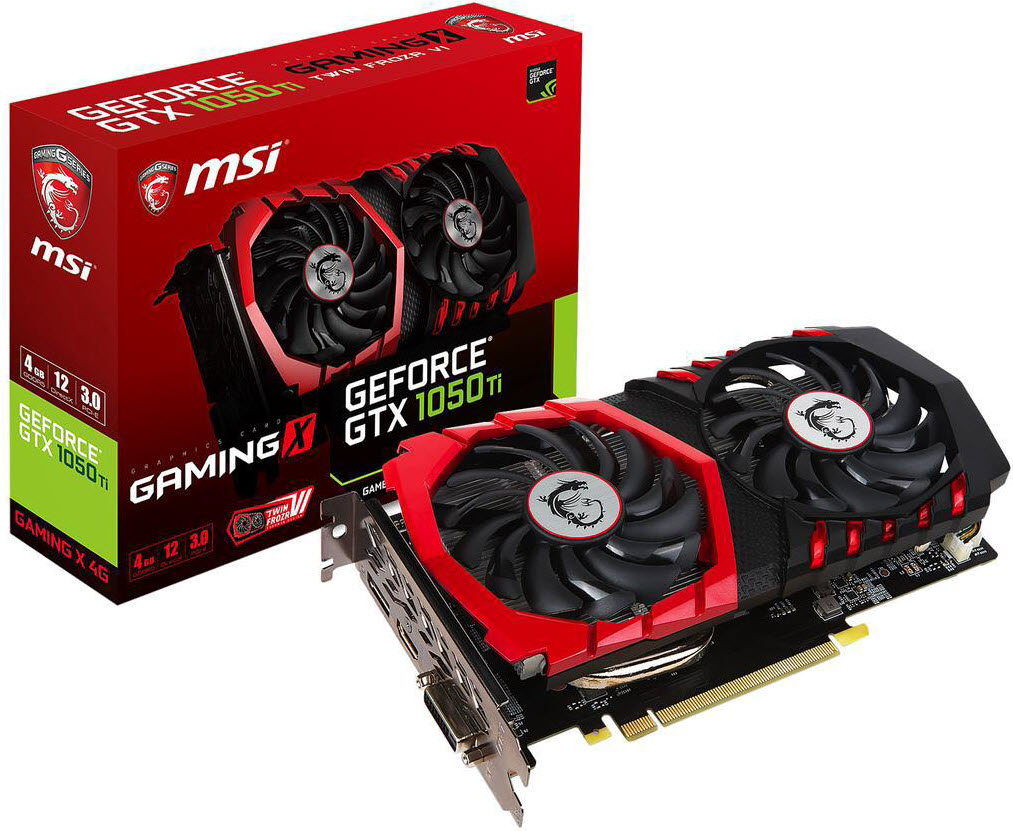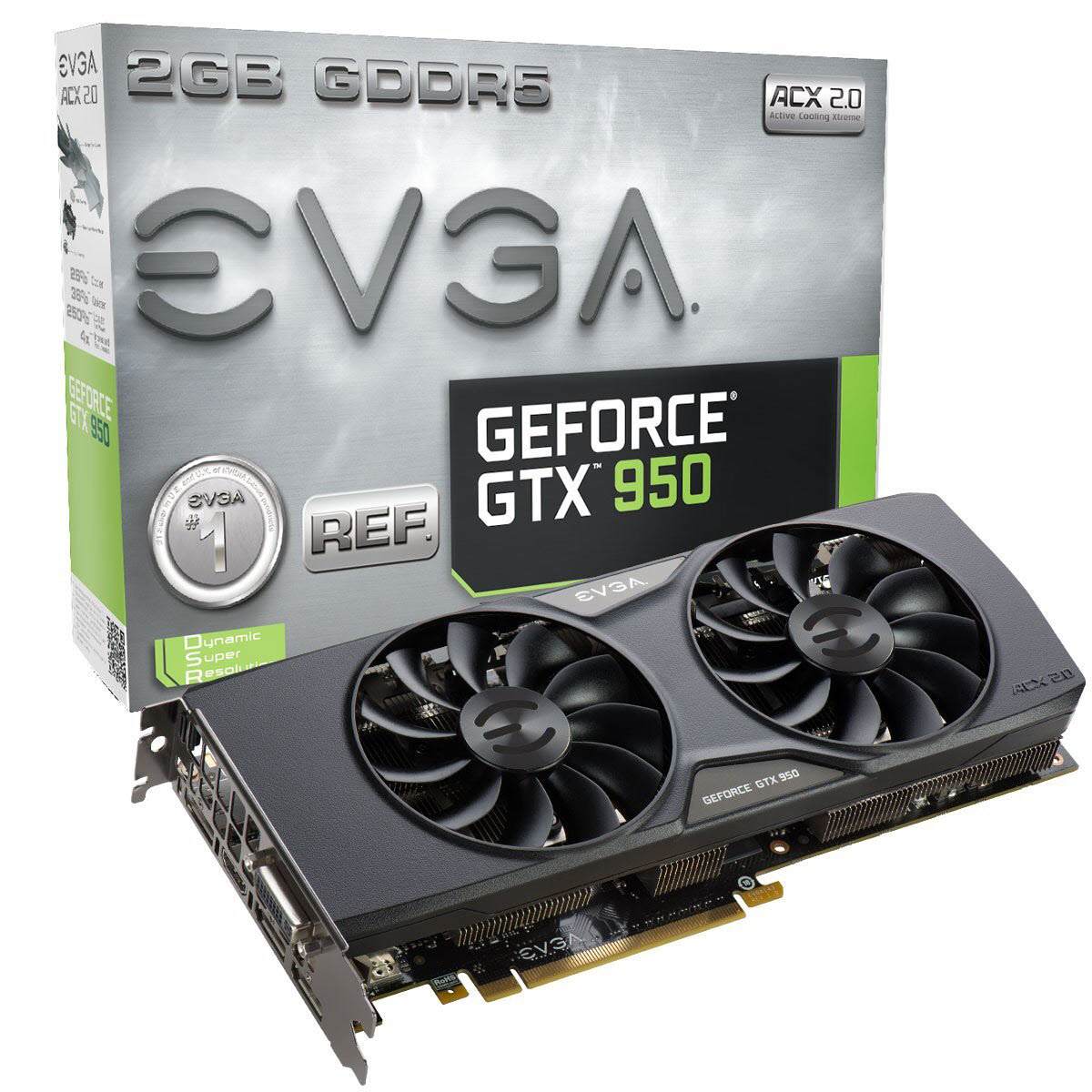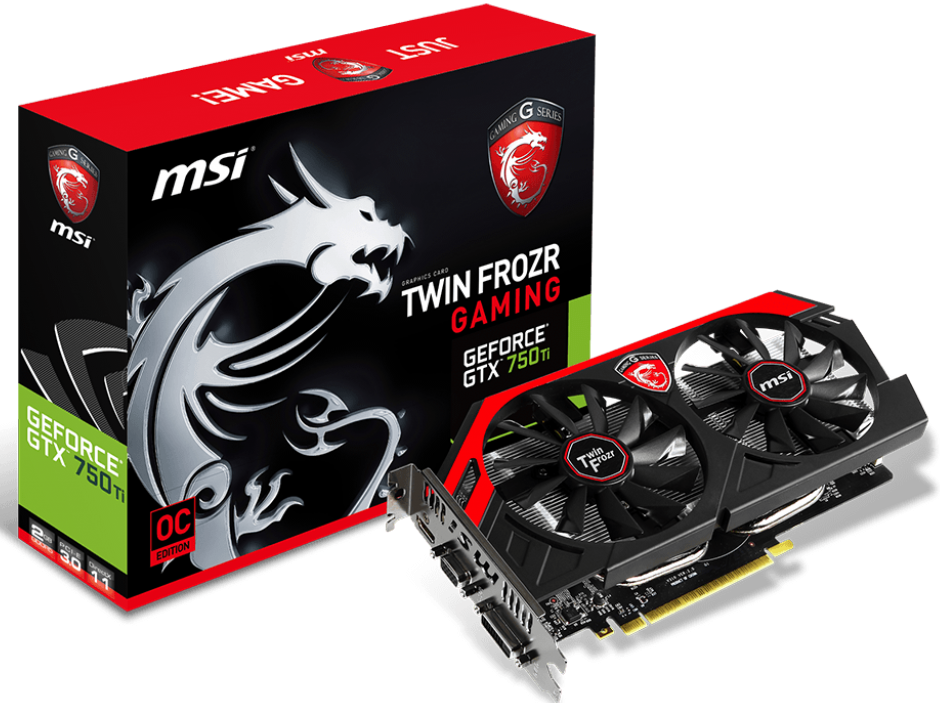Nvidia GeForce GTX 1050 & 1050 Ti Review
Meet GeForce GTX 1050 & 1050 Ti
Nvidia owns the high-end graphics space with its Pascal-based GPUs. AMD is making a big splash in the mainstream market with its Polaris-based cards. Inevitably, the companies’ 14/16 nm processors were bound to overlap. The PC world is perhaps most transfixed by the coming of AMD’s Vega GPUs, which promise performance to rival the top tier of GeForce cards. But that won’t happen until the first half of 2017 (presumably closer to mid-year).
In the nearer term, Nvidia is ready to battle AMD’s 2 GB and 4 GB Radeon RX 460 with its GeForce GTX 1050 and 1050 Ti, announced earlier this month. Both models utilize a new GPU called GP107. It’s composed of 3.3 billion transistors and manufactured on a 14 nm FinFET process—notably not TSMC’s 16FF+ node. Although the processor originates from a different foundry, GP107 continues to reflect the Pascal architecture’s basic resource allocation.
Of course, some of Pascal’s flagship features aren’t as relevant as we venture down into this budget segment. Simultaneous Multi-Projection, for instance, takes geometry data and processes it through as many as 16 projections from one viewport using a special hardware block. Gaming across multiple monitors or through a VR HMD are applications that stand to benefit. However, neither is realistic on a sub-$150 graphics card.
Still, expect GeForce GTX 1050 and 1050 Ti to shake up the space between $100 and $150. Nvidia tells us that its vanilla 1050 should start at $110, while the 1050 Ti sells from $140. Incidentally, AMD’s Radeon RX 460 4 GB was supposed to go for $110 as well. Now 2 GB 460s are priced at $110, while the 4 GB model commands at least $130. Hopefully, pressure from GP107 keeps AMD’s board partners a little more honest than they’ve been…provided the 1050s aren’t inflated right out of the gate as well.
GeForce GTX 1050 Ti: Raising The Bar At 75 W
The GeForce GTX 750 Ti was such a big deal back in 2014 because it made 1920x1080 gaming accessible from a 60 W graphics card. It drew all the power it needed through a 16-lane PCIe slot. Some GeForce GTX 1050 Ti cards will repeat that feat by ducking in under a 75 W ceiling, while others purposely step past it and incorporate six-pin power connectors for greater overclocking headroom.
GeForce GTX 1050 Ti employs the aforementioned GP107 in its uncut form. All six of the GPU’s Streaming Multiprocessors are enabled, split between two of what Nvidia calls Graphics Processing Clusters. The four existing Pascal-based chips pack five SMs into a GPC. GP107, in contrast, sports three SMs per GPC.
Get Tom's Hardware's best news and in-depth reviews, straight to your inbox.
With 128 single-precision CUDA cores per SM, GeForce GTX 1050 Ti wields a total of 768. Each SM also includes eight texture units (adding up to 48 across the processor), 256 KB of register file capacity, 96 KB of shared memory, and 48 KB of L1/texture cache.
The back-end of GP107 is correspondingly trimmed to reflect the 1050 Ti’s mainstream pedigree aimed at 1920x1080 gaming. Four 32-bit memory controllers provide an aggregate 128-bit data path. Similar to other Pascal-based GPUs, each controller is associated with eight ROPs and 256 KB of L2 cache, adding up to 32 ROPs and 1 MB of cache. Nvidia arms the 1050 Ti with 4 GB of 7 GT/s GDDR5 memory able to move up to 112 GB/s. And the company is quick to point out that Pascal’s memory optimizations improve effective bandwidth compared to prior architectures, too. Adapted from our GTX 1080 coverage: "[GP107's] delta color compression tries to achieve 2:1 savings, and this mode is purportedly enhanced to be usable more often. There’s also a new 4:1 mode that covers cases when per-pixel differences are very small and compressible into even less space. Finally, Pascal has a new 8:1 mode that combines 4:1 constant compression to 2x2 blocks with 2:1 compression of the differences between them."
Nvidia’s efforts to down-scale GP107 result in a design with 60% of the CUDA cores and texture units as GeForce GTX 1060’s GP106. It also gets two-thirds of the faster card’s ROPs and memory bus width. But whereas the 1060’s processor operates at a 1506 MHz base clock rate, 1050 Ti starts at 1290 MHz. Further, the 1050 Ti’s 1392 MHz GPU Boost frequency is ~75% of the 1060’s.
Given the overclocking headroom our sample demonstrated (more on this shortly) and GP107’s higher stock voltage compared to GP106, it seems as though GeForce GTX 1050 Ti’s factory spec is determined by the board’s 75 W TDP rating. Similar to GeForce GTX 750 Ti, Nvidia wanted this card to get its power from a 16-lane PCIe slot, and exceeding that figure with higher voltage/frequency would have required more juice from another source. Partners that build 1050 Tis with six-pin connectors should be able to extract quite a bit more performance through higher clock rates, we're guessing.
According to Nvidia, GeForce GTX 1050 Ti cards will start at $140, making them at least $10 more expensive than most 4 GB Radeon RX 460s. If we’ve learned one thing from this year’s graphics card launches, however, it’s that suggested pricing is just that, and GPU manufacturers are quick to disavow themselves of responsibility when the card vendors charge more.
GeForce GTX 1050: Dialed-Down, But Still 1080p-Capable
Nvidia hopes to see the pared-down GeForce GTX 1050 selling for $110, which puts it squarely up against the Radeon RX 460 (AMD’s 2 GB cards go for $110, while the 4 GB model starts around $130). Dimensionally, our 1050 Ti and 1050 samples from MSI look identical. All of the differences between them are hidden by a dual-slot heat sink.
For starters, the 1050’s GP107 processor has one of its SMs disabled, cutting 128 CUDA cores and eight texture units. What’s left is a GPU with 640 CUDA cores and 40 texture units. Nvidia makes up for some of that resource loss—and exploits the drop in power consumption—with slightly higher clock rates. GTX 1050’s base frequency is 1354 MHz; the GPU Boost rating jumps to 1455 MHz.
Like the 1050 Ti, GeForce GTX 1050 exposes 32 ROPs and the same 1 MB of L2. Instead of 4 GB on its aggregate 128-bit bus, though, Nvidia deploys 2 GB at the same 7 GT/s. Theoretical maximum bandwidth remains the same at 112 GB/s.
GeForce GTX 1050 should be quicker than GTX 950, one of our favorite models for 1080p gaming. That 90 W card previously sold for $140 and required one six-pin power connector. More performance for less money, without the six-pin connector allows the 1050 to shine in environments the 950 wasn’t as well-suited to. Moreover, GP107 incorporates a lot of fixed-function media acceleration the GeForce GTX 750 Ti didn’t have, such as HEVC decode at up to 4K60p and VP9 decode.
HTPC enthusiasts can expect to wait a while for GeForce GTX 1050 availability, though. Whereas the 1050 Ti should show up for sale right away, Nvidia’s guidance suggests the cheaper version won’t land until the second week of November. There won’t be any reference (Founders Edition) designs. All of the 1050 and 1050 Ti cards will come from board partners, so pay close attention to specifications, particularly if you want a model without a power connector.
MORE: Best Graphics Cards
MORE: Desktop GPU Performance Hierarchy Table
MORE: All Graphics Content
Current page: Meet GeForce GTX 1050 & 1050 Ti
Next Page A Closer Look At MSI's GeForce GTX 1050 Ti Gaming X 4 GB-
WildCard999 EVGA GTX 1050 ti around $150Reply
http://www.evga.com/Products/ProductList.aspx?type=0&family=GeForce+10+Series+Family&chipset=GTX+1050+Ti
EVGA GTX 1050 around $120
http://www.evga.com/Products/ProductList.aspx?type=0&family=GeForce+10+Series+Family&chipset=GTX+1050
It will probably be about $20-$30 more for the SSC & FTW versions. -
elbert Leaks suggested the 1050ti is as fast as the 960 and R9 280. I would love to have seen if that was true. My 280 is getting old and needs an upgrade. Any chance those can be added to the benchmarks?Reply -
tslot05qsljgo9ed Blind TrollReply
Zortac GTX 1050 Mini: $109.95
Zortac GTX 1050 Ti Mini: $139.95
http://www.newegg.com/Product/ProductList.aspx?Submit=ENE&IsNodeId=1&Description=1050&bop=And&SrchInDesc=zotac&Page=1&PageSize=36&order=BESTMATCH -
Corwin65 Reply18776894 said:Blind Troll
Zortac GTX 1050 Mini: $109.95
Zortac GTX 1050 Ti Mini: $139.95
http://www.newegg.com/Product/ProductList.aspx?Submit=ENE&IsNodeId=1&Description=1050&bop=And&SrchInDesc=zotac&Page=1&PageSize=36&order=BESTMATCH
If you're in the market snag one of those before prices jump. -
cdrkf @Elbert no way the 1050ti is going to best the 280, it's just not got enough resources behind it.Reply
You'd be far better looking at an RX 470 / 480 card or one of the 1060 cards imo. The only advantage to the 1050ti over your current card is lower power consumption, although the 280 isn't that bad anyhow. -
artk2219 All I am seeing is a nice pricewar brewing for the midrange segment. The RX 460 needs to drop to 90 to 95. and the 470 should ideally drop to 150 to 160. On Nvidias end the 1050 is just fine at 110, but the ti needs to drop to 130 to 135. Either way, i would save a little more and take a used R9 290 over any of them, but thats me. The only real reason to be crazy excited about the 1050, is if your limited to a single slot case and need a low power but decent performance card. In which case the 1050's are an excellent option, we really could use a nice single slot card.Reply -
spdragoo @Elbert: Didn't find direct comparisons to the R9 280, but Techspot's review showed benchmark comparisons to the R9 380 (which is pretty much on par with the 280):Reply
http://www.techspot.com/review/1269-nvidia-geforce-gtx-1050/
@CDRKF: Technically, you're correct: the GTX 1050Ti didn't (consistently) put in a better performance than the GTX 960 or R9 380. However, there were a couple of games that it beat them in (beating the 960 more often than the 380), & even when it didn't beat them its performance was right in the ballpark. To me, that says that either the 1050 or 1050Ti would make an excellent card for someone wanting to replace a broken R9 280/280 or GTX 960, but doesn't have the budget for a GTX 1060 or RX 470/480, & especially a good choice for someone whose system (*cough* OEM garbage *cough*) doesn't allow them to use a GPU that requires PCIe power connectors...as long as they're not expecting to game any higher than 1080p resolutions.




